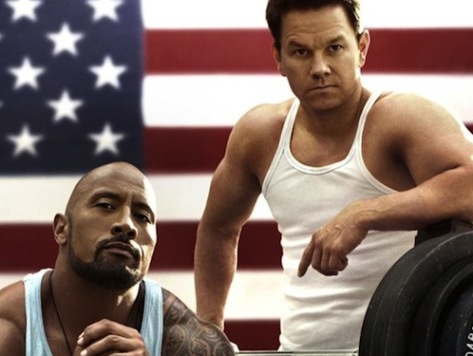Over the past couple of weeks I’ve had the opportunity to see Michael Bay’s horribly-titled “Pain and Gain” and Martin Scorsese’s “The Wolf of Wall Street.” Both movies are similar in a number of ways: Both were released in 2013; are R-rated and based on real-life criminals in the 1990s; tell the story from the point of view of the criminal (who narrates throughout); and employ high-octane editing and time-jumps that turn the story’s pacing up to 11.
Moreover, both are very entertaining, offer terrific performances, and specifically dwell on American greed and excess through the hazy lens of drug addiction.
For his efforts, Scorsese won critical acclaim, five Oscar nominations (including Best Picture and Best Director), and worldwide box office returns that totaled $392 million.
—
—
Bay earned no Oscar nominations, only scored $95 million in worldwide box office returns, and plenty of scorn from critics who took it to him with middling to hostile reviews. Which is a shame because…
Bay’s film is the better of the two.
I’m not taking anything away from “The Wolf of Wall Street” and the only performance so far from Leonardo DiCaprio that lives up to his hype (Jonah Hill also hits a home run). “Wolf” is plenty entertaining and filled with a number of memorable scenes. It’s 3 hour length and the repetitive displays of excess do, though, end up considerably undermining it.
Another drawback is that you feel as though you have seen it all before. Scorsese basically brings together his own “Goodfellas” and Oliver Stone’s “Wall Street.” You’re never once bored, but when it’s over you feel like you’ve just finished a 180 minute music video that doesn’t have all that much to say that hasn’t been said by the other 25 other Wall Street films.
There’s also the relentless focus on DiCaprio’s character, the real-life Jordan Belfort. More focus on Kyle Chandler’s dogged FBI agent would’ve not only been a welcome relief but added some humanity to the story.
—
—
I get that Scorsese wants you to feel the repetitive hollowness of Belfort’s life. That doesn’t mean it makes for a great movie. And I’m convinced you could cut the entire second hour out of “Wolf” without anyone noticing.
The near-brilliance of “Pain and Gain” caught me off guard. It’s based on the true story of three workaday personal trainers in Miami who kidnap a rich client in the hopes of getting away with having him sign over all his personal assets to them.
Mark Wahlberg is terrific as the naïve, soft-spoken, not very bright sociopath who acts as the muscle-head, can-do ring leader. Dwayne Johnson and Anthony Mackie are equally outstanding as dimwits poisoned by steroids who bring all their personal hang-ups to the kidnapping. As the kidnapee you kind of don’t mind seeing tortured, Tony Shalhoub is hilarious.
It’s fair to argue that “Pain and Gain” is a mash-up of Wahlberg’s 1997 break out “Boogie Nights” (sweet, naïve guy in a dirty business) and Ted Demme’s underrated “Blow.” But unlike Scorsese, Bay takes us into a world that isn’t as played out as the world of Wall Street — the world of sun-drenched, muscle-bound Miami personal trainers warped by steroids and the envy that comes with training the wealthy but never being counted among them.
“Pain and Gain” is frequently hilarious, every bit as watchable as “Wolf” (and 50 minutes shorter), and commits immediately to an offbeat tone that also makes the movie feel much fresher than Scorsese’s well-worn formula of setting cinematic excess to one pop tune after another.
Both movies are very good. “Pain and Gain” is just better.
Follow John Nolte on Twitter @NolteNC

COMMENTS
Please let us know if you're having issues with commenting.